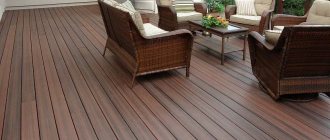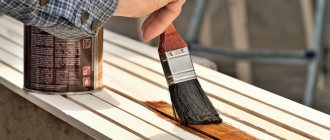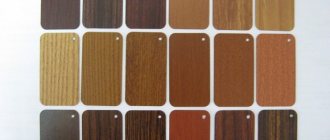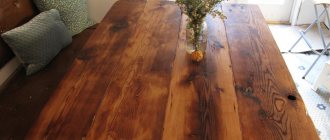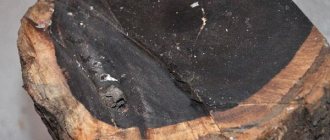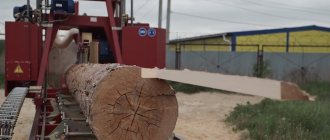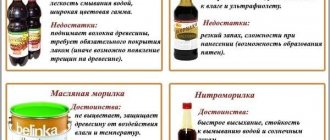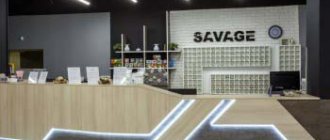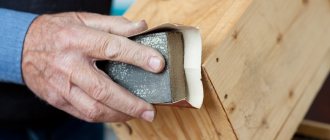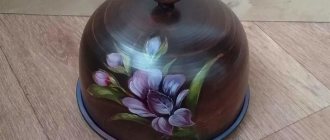How to protect wood so that it retains its physical properties and looks beautiful for many years? Can different types of impregnation be used for both external and internal wood?
Wood is a universal natural building material that has been used for centuries for the construction of private houses, outbuildings, as well as for interior decoration and furniture. Wooden floors, stairs or furniture can last for generations to come, but it is important that the wood is properly protected from the harmful effects of external factors, especially atmospheric and biological factors. How to do it? What measures should be used to extend the life of wooden elements?
Factors of wood destruction and methods for their prevention
Wood - both inside and outside the house - is exposed to many factors that can lead to its damage, destruction and loss of aesthetic value. It is worth knowing what the damaging effect is on them, as this will help protect the material and increase its overall strength. Basically, wood destructive factors can be divided into two groups:
- physical factors, also called abiotic;
- biological agents - fungi, algae, insects.
The most destructive effects on wood are caused by atmospheric factors such as water, humidity, temperature and solar radiation. Changing weather conditions can even completely destroy the wood. In conditions of high air humidity, it can begin to get wet and swell, and when the humidity level drops sharply, the wood shrinks. Such changes lead to deformation of the material and cracking of natural fibers. The impact of UV radiation on wood is also unfavorable. While this does not change the overall strength of this raw material, its surface will deteriorate over time.
In turn, biological factors can also have a destructive effect on wood. Fungi and insects pose a huge threat to wooden elements as they gradually decompose. In a short time this decomposition can be very deep and the wood will be completely destroyed. Material contaminated by insects and fungi may be beyond repair and must be removed and replaced with new material. To protect against fungus, it is necessary to properly prepare the wood for use. You should know that fungi will not grow in dry wood that will be well seasoned, or in wood with more than 80% moisture content. Such organisms do not like either low or too high temperatures and spacious rooms.
Algae can develop on very damp wood, especially in shaded areas. Painting wood does not guarantee that algae will not attack it. Only protecting these raw materials from moisture can help protect wooden products from the harmful effects of fungi and algae. Among biological factors, insects pose a great danger to wood, next to domestic mushrooms. Material occupied by insects, such as bark beetles, loses its strength properties and will therefore not be suitable for further use. For this reason, it is necessary to protect the wood from insects, for example by impregnation .
Protecting wood from moisture should begin before it is used, for example, for frame construction of a house. Before using wood as a building material, it must be dried. Hardwood takes longer to dry than softwood. Also, be sure to saturate dry wood to prevent it from absorbing water and moisture from the air.
Protecting logs from cracking
To prevent cracking of a log, you need to protect its main less vulnerable place - the ends. To do this, you can use the excellent product Tor Plus from Neomid. It will prevent the logs from cracking when drying and will reduce their linear deformation. In addition, it will prevent the ends from becoming waterlogged and rotting. After application, a thin and elastic coating is formed on the surface, which has good water resistance and vapor permeability. Thor Plus does not lead to changes in the structure of the log. Manufacturers release impregnation to the market immediately in a ready-to-use form.
What difficulties may arise when protecting wood?
You already know that protecting wood helps preserve its mechanical properties, durability and aesthetics. It protects them from the harmful effects of temperature, sunlight, moisture and biological factors. However, you may encounter many obstacles when protecting this material. This raw material is heterogeneous and its structure is varied. Products that protect the material and how they are applied should be selected depending on the type of wood, where it will be used - outdoors or indoors - and the intensity of use.
Resin content can be a problem when preserving wood. Basically, this material must be free of resin, because the varnishes with which you can protect wooden elements do not allow adequate adhesion to the substrate. Varnished wood with a high resin content will take longer to dry, and this substance will soften the protective coating. You should know that its formation can be greatest near the nodes. You may notice this if you choose water-based wood protectants. After painting, brown spots will appear at the nodes.
How can you prevent the negative effects of moisture on the material?
There are several options for preventing wood from being damaged by excessive moisture:
- Carrying out preventive measures.
- Use of folk remedies.
- Treating wood with antiseptics.
The latter are divided into the following categories:
- by place of application: for internal and external use;
- by composition: organic and inorganic;
- depending on what solvent is present in the composition: aqueous (such antiseptics, in turn, are divided into surface antiseptics and penetrating ones) or non-aqueous;
- by structure: powders that still need to be diluted, ready-made solutions and pastes;
- Oil antiseptics are isolated separately.
Let's look at all the options in more detail.
Carrying out preventive measures
Instead of fighting the rot that appears, it is easier to prevent its occurrence.
An effective way of prevention is to dry wooden materials in one of four ways:
- The longest way is to dry the board naturally. The material can be stored in a dry, well-ventilated area for up to a year.
- Drying wooden boards in a chamber using hot air is a faster and more effective way.
- The board is covered with liquid paraffin. After which it is fired for several hours in the oven. This method is called waxing.
- A small piece of wood can be dried by placing it in boiling linseed oil for a while.
Wooden surfaces must be carefully inspected annually and, if areas susceptible to rotting are identified, they must be thoroughly treated.
Use of folk remedies
Time-tested folk remedies have their clear advantages:
- inexpensive cost;
- high efficiency;
- ease of use;
- hypoallergenic (for some products);
- environmental friendliness (for some products).
The following folk remedies are used to protect wood:
- Add 3 parts sunflower oil to 1 part propolis. The wooden surface is cleaned of dust and other contaminants and the mixture is applied.
Advantages: prevents the emergence of microorganisms that lead to rotting, protects the material from moisture.
Disadvantages: wood becomes flammable.
- Iron sulfate solution.
Advantages: high efficiency - the solution protects the material from fungal mold and bacteria; With thorough impregnation, additional measures to protect the wood from moisture and rot will not be required.
Disadvantages: long drying time (up to a month); The treated wood surface should not be exposed to direct sunlight until it is completely dry.
- Impregnation of wood with bitumen. Widely used for processing the lower logs of a log house.
Advantages: effective protection.
Disadvantages: not environmentally friendly.
- Impregnation of wood with machine oil.
Advantage: protects well from rot and mold.
Disadvantages: easily ignites.
- Finnish method. A solution for treating wood against rotting is prepared from water and flour mixed with salt, slaked lime and iron sulfate. The surface is treated with the heated mixture several times. After the first time, wait until the composition is absorbed and dries. And they impregnate the tree again.
Advantages: effective, time-tested method.
Disadvantages: it is necessary to apply the composition several times.
The most popular antiseptics
Manufacturers of impregnations try to take into account all consumer requests. Depending on where the treated wood will be used, whether it comes into contact with metal parts, whether it will be exposed to weather conditions and other conditions, an antiseptic is selected. Among the most popular products on the Russian market are the following:
- "Senezh". It is difficult to wash out. This means that it can be used even where the tree will constantly come into contact with water. For example, in a bathhouse, sauna or for treating a fence, cellar, greenhouse. Protects against insects dangerous to wood. Can be used both indoors and outdoors. The manufacturer promises protection even in difficult conditions for 30 years
- "Bitsidol-100". Suitable even for tropical climates with high humidity. It is used to cover surfaces that are in the open air and those that are in direct contact with humans. Protects against wood-boring insects. Effective against mold and rot. Can change the color of a wooden surface to green.
- "Bitsidol-500". It has the same properties as Bitsidol-100. But it does not change the color of the processed material.
- "Neomid 500". Copes well with rot, preventing its reappearance. High price.
- "Bioshield League". Powerful impregnation. Cheap analogue of "Neomid 500".
- "Drevosan Profi". Prevents the spread of rot and protects against insects. Used to protect fences, window casings, and small wood products.
- "Pinotex". The company produces compounds for both indoor and outdoor wood processing. A coloring pigment can be added to the antiseptic and used not only as a protective agent, but also for decoration.
- "Tikkurila". Manufacturers offer a wide range of antiseptics for treating wood against rot and moisture. It contains compositions designed specifically for baths, for floors or for terraces. There are certain compounds that can only be used outside, and there are those that can be used indoors. The peculiarity of impregnation is that it protects not only from rot, but also from exposure to sunlight.
- "Pirilax." Fire retardant for wood with an antiseptic effect. Reduces wood cracking. Protects it from mold and harmful bugs.
Note! The ability of an antiseptic to increase the fire safety of a tree does not mean that it cannot catch fire. With prolonged exposure to fire, even treated material will ignite.
Important! When choosing an antiseptic, consider what finishing materials it is compatible with. Some impregnations can be well covered with paint and varnish. Others are already used to create a finishing coating.
Wood species and care methods
Wood obtained from softwoods such as pine and spruce is most often used in residential construction . It is a soft and flexible material that is easy to shape, but very durable. In carpentry, the most common wood of choice for making wooden furniture is hardwood, such as oak, ash, beech or alder, as it is heavier and harder.
Not all types of wood can be protected in the same way. You must choose a sealant that is suitable for the type of material, humidity, resin and tannins. Find out below how to protect unfinished wood, and how to protect wood floors or furniture that has already been varnished or painted.
Impregnation
The main method of protecting wood from moisture and other harmful external factors is its impregnation . This is necessary because after mechanical processing the material loses its natural protective components. If you skip the impregnation stage, the wood from which the house is built, its decoration, and its furnishings will be highly susceptible to various hazards due to air, temperature, humidity from precipitation or solar radiation. Lack of protection means that the wooden elements are likely to become damp, and there will also be pockets of mildew or mold. Impregnation can effectively prevent this.
How are protective coatings applied?
The following tools are used to apply the selected products:
- Roller with telescopic handle. According to the selected composition, a fur/foam rubber nozzle is used.
- Brush. Used when processing internal corners and baseboards.
- Paint brush with natural bristles. Used to apply paint to a textured surface.
- Putty knife. It is used to remove the old layer, remove sagging and seal irregularities.
- Painting tray for loading dye.
- Masking tape. Provides protection for platbands and walls from staining, and is used for marking lines.
- Solvents. They dilute thick liquids and remove splashes of paint that get on walls, clothes and hands.
- Rubber gloves, eye protection glasses.
Tree on the street - ways to care for a tree
You also need to remember about caring for the façade material. The facade, entirely or partially wooden, is decorative. However, it requires frequent care and maintenance. To do this, you can use a stain that contains UV filters, which guarantees higher protection against the damaging effects of UV radiation and provides long-term protection for the wood, regardless of the weather.
It is best to start maintenance work after the summer season. Thoroughly clean the boards from dirt and residues of previous varnish or grease. Only after such work can you apply a special decorative protective agent, for example, wood oil . The wood is impregnated from the outside, protecting it with varnish, oil or wax from solar radiation, moisture, fungi, mold and insects.
Threats
Rot and mold attack the picket fence
Before proceeding directly to the consideration of solutions suitable for wood processing, let's take a closer look at the possible dangers:
| Threat | Description |
| Rotting | This is the most common and dangerous problem, caused by water penetrating through the pores in the wood surface. Once inside, the liquid causes the cellulose to break down. |
| Mold | In addition to destructive effects, moisture can become a source of infection of the tree with fungus, changing its color and emitting unpleasant odors. |
| Pests | Wood can be a desirable treat for some types of insects. |
| Fire | Wooden logs are even used to heat solid fuel stoves, which indicates the flammability of this material. In the event of a fire, it releases a large amount of thermal energy, spreading the fire. |
Photo of a wood borer beetle feeding on wood
As you can see, there are quite a lot of factors that can ruin expensive material, so it’s better to take care of its protection in a timely manner.
Tree at home - how to care for a tree at home?
Every day, it is enough to wipe wooden furniture in the house or wooden ceiling beams with a damp cloth to remove dust and dirt. After you're done cleaning your wood furniture, you still need to dry it with a paper towel. Do not use harsh chemicals for cleaning as they may damage the wood's protective coating.
Any scratches and dents on wooden countertops or furniture can be filled with a special putty of the appropriate color. Lightly rub the damaged area with 120-grit sandpaper to mask the defect. Then apply a little excess putty, let everything dry and sand the surface with sandpaper. After sanding, it is also necessary to renew the varnish with the same level of gloss as on the rest of the furniture.
Inside, wood is less susceptible to the harmful effects of moisture, insects and microorganisms, but it should still be provided with proper protection and durability. This will be possible thanks to the appropriate impregnations for this material, in addition, you will be able to adjust the shade and color of the wood to the intended interior.
Conclusion
Wood needs additional protection from the harmful effects of the environment. This can be provided by varnishes and paints for wooden surfaces, the choice of which is quite wide today in specialized stores.
Coating wooden structures with paints and varnishes extends their service life
The video in this article will provide additional resources. Protect wooden structures in a timely manner.
What is the best antiseptic for wood?
When purchasing material for impregnating a wooden structure, you need to rely on the following criteria:
- we determine what degree and type of unreliability;
- what is most dangerous in this or that case (moisture or fire);
- determine the type of wood
A mandatory postulate is proper drying and preparation of lumber. We also assess the degree of demand. For example, we will carry out the protective staining procedure in advance. We will also check in advance for the compatibility of the selected varnishes and paints with such products as glue and lime.
We focus on the time frame during which the work will take place. We are considering additional manipulations to preserve the tree. What varnishes and paints will we use? You can protect wooden buildings from external factors using various compounds. This way the physical qualities and properties of the wood are preserved.
